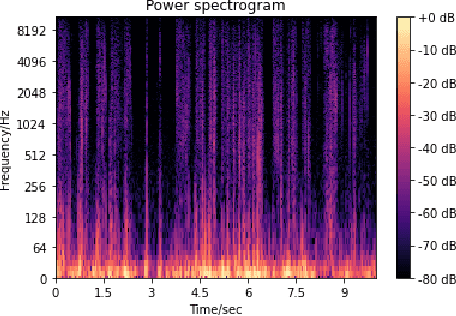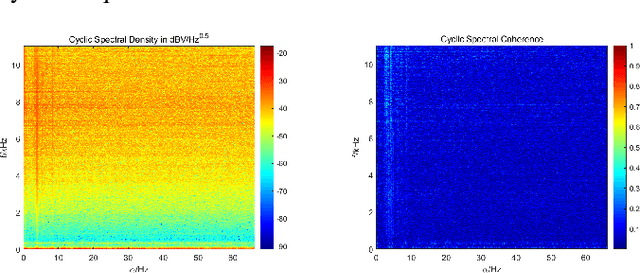Zexin Fang
Lightweight Node Selection in Hexagonal Grid Topology for TDoA-Based UAV Localization
Jun 17, 2025Abstract:This paper investigates the optimization problem for TDoA-based UAV localization in low-altitude urban environments with hexagonal grid node deployment. We derive a lightweight optimized node selection strategy based on only RSSI measurements, to pre-select optimal nodes, avoiding extensive TDoA measurements in energy-constrained UAV scenarios. Theoretical and simulation results demonstrate that dynamically selecting the number of reference nodes improves localization performance while minimizing resource overhead.
How Cyclic Acoustic Patterns Influence ASMR Perception: A Signal Processing Perspective
Apr 02, 2025



Abstract:Autonomous Sensory Meridian Response (ASMR) has been remarkably popular in the recent decade. While its effect has been validated through behavioral studies and neuro-physiological measurements such as electroencephalography (EEG) and related bio-signal analyses, its development and triggers remain a subject of debate. Previous studies suggest that its triggers are highly linked with cyclic patterns: predictable patterns introduce relaxation while variations maintain intrigue. To validate this and further understand the impact of acoustic features on ASMR effects, we designed three distinct cyclic patterns with monophonic and stereophonic variations, while controlling their predictability and randomness, and collected ASMR triggering scores through online surveys. Then, we extracted cyclic features and carried out regression analysis, seeking an explainable mapping of cyclic features and ASMR triggers. We found that relaxing effects accumulate progressively and are independent of spatial orientation. Cyclic patterns significantly influence psychological and physical effects, which remain invariant with time. Regression analysis revealed that smoothly spread and energy-dense cyclic patterns most effectively trigger ASMR responses.
Privacy Protection Framework against Unauthorized Sensing in the 5.8 GHz ISM Band
Nov 08, 2024Abstract:Unauthorized sensing activities pose an increasing threat to individual privacy, particularly in the industrial, scientific, and medical (ISM) band where regulatory frameworks remain limited. This paper presents a novel signal process methodology to monitor and counter unauthorized sensing activities. Specifically, we model the pedestrian trajectories as a random process. Then, we leverage the Cram\'er-Rao bound (CRB) to evaluate sensing performance and model it as sampling error of such a random process. Through simulation, we verify the accuracy of monitoring unauthorized sensing activities in urban scenarios, and validate the effectiveness of corresponding mitigation strategies.
A Robust UAV-Based Approach for Power-Modulated Jammer Localization Using DoA
May 15, 2024Abstract:Unmanned aerial vehicles (UAVs) are well-suited to localize jammers, particularly when jammers are at non-terrestrial locations, where conventional detection methods face challenges. In this work we propose a novel localization method, sample pruning gradient descend (SPGD), which offers robust performance against multiple power-modulated jammers with low computational complexity.
Robust Federated Learning for Wireless Networks: A Demonstration with Channel Estimation
Apr 03, 2024



Abstract:Federated learning (FL) offers a privacy-preserving collaborative approach for training models in wireless networks, with channel estimation emerging as a promising application. Despite extensive studies on FL-empowered channel estimation, the security concerns associated with FL require meticulous attention. In a scenario where small base stations (SBSs) serve as local models trained on cached data, and a macro base station (MBS) functions as the global model setting, an attacker can exploit the vulnerability of FL, launching attacks with various adversarial attacks or deployment tactics. In this paper, we analyze such vulnerabilities, corresponding solutions were brought forth, and validated through simulation.
3D Cooperative Localization in UAV Systems: CRLB Analysis and Security Solutions
Feb 15, 2024Abstract:This paper presents a robust and secure framework for achieving accurate and reliable cooperative localization in multiple unmanned aerial vehicle (UAV) systems. The Cramer-Rao low bound (CRLB) for the three-dimensional (3D) cooperative localization network is derived, with particular attention given to the non-uniform spatial distribution of anchor nodes. Challenges of mobility and security threats are addressed, corresponding solutions are brought forth and numerically assessed . The proposed solution incorporates two key components: the Mobility Adaptive Gradient Descent (MAGD) and Time-evolving Anomaly Detection (TAD). The MAGD adapts the gradient descent algorithm to handle the configuration changes in cooperative localization systems, ensuring accurate localization in dynamic scenarios. The TAD cooperates with reputation propagation (RP) scheme to detect and mitigate potential attacks by identifying malicious data, enhancing the security and resilience of the cooperative localization.
A Reliable and Resilient Framework for Multi-UAV Mutual Localization
Sep 08, 2023Abstract:This paper presents a robust and secure framework for achieving accurate and reliable mutual localization in multiple unmanned aerial vehicle (UAV) systems. Challenges of accurate localization and security threats are addressed and corresponding solutions are brought forth and accessed in our paper with numerical simulations. The proposed solution incorporates two key components: the Mobility Adaptive Gradient Descent (MAGD) and Time-evolving Anomaly Detectio (TAD). The MAGD adapts the gradient descent algorithm to handle the configuration changes in the mutual localization system, ensuring accurate localization in dynamic scenarios. The TAD cooperates with reputation propagation (RP) scheme to detect and mitigate potential attacks by identifying UAVs with malicious data, enhancing the security and resilience of the mutual localization
Artificial ASMR: A Cyber-Psychological Study
Oct 27, 2022



Abstract:The popularity of Autonomous Sensory Meridian Response (ASMR) has skyrockteted over the past decade, but scientific studies on it are still few and immature. With our attention caught by the common acoustic patterns in ASMR audios, we investigate the correlation between the time-frequency and cyclic features of audio signals and their effectiveness in triggering ASMR effects. A cyber-psychological approach that combines signal processing, artificial intelligence, and experimental psychology is taken, with which we are able to identify ASMR-related acoustic features, and therewith synthesize random artificial ASMR audios.
 Add to Chrome
Add to Chrome Add to Firefox
Add to Firefox Add to Edge
Add to Edge